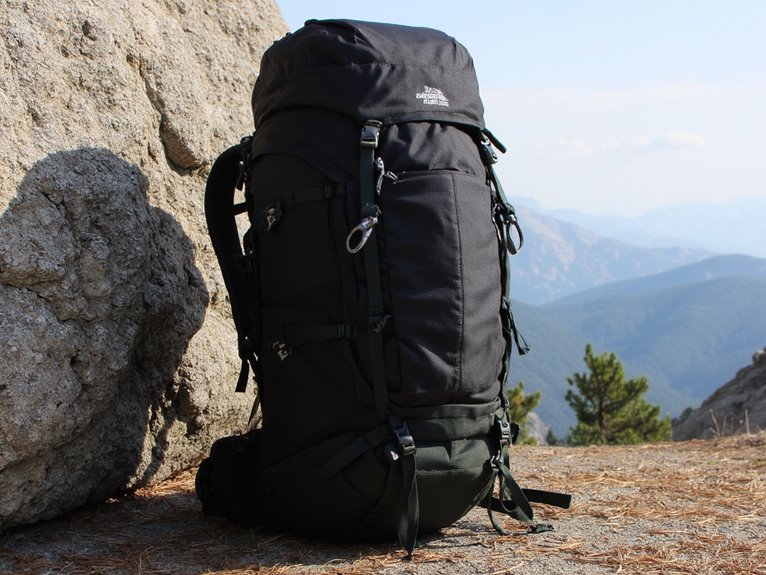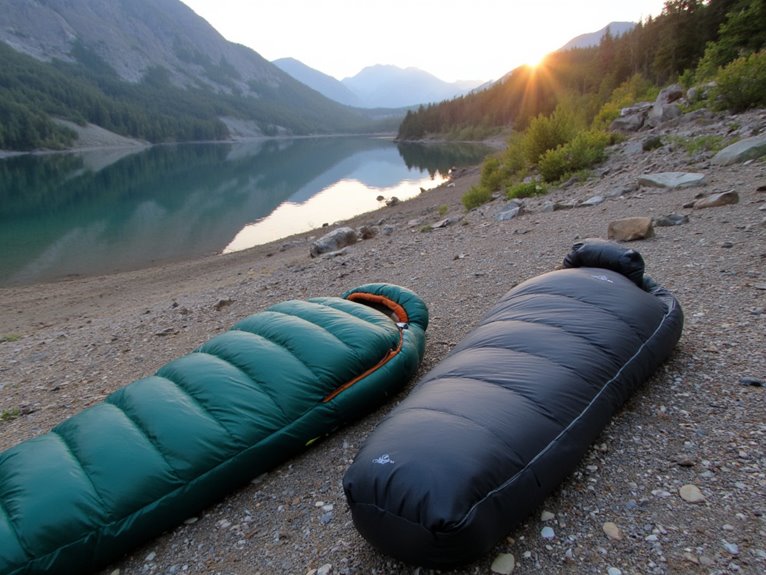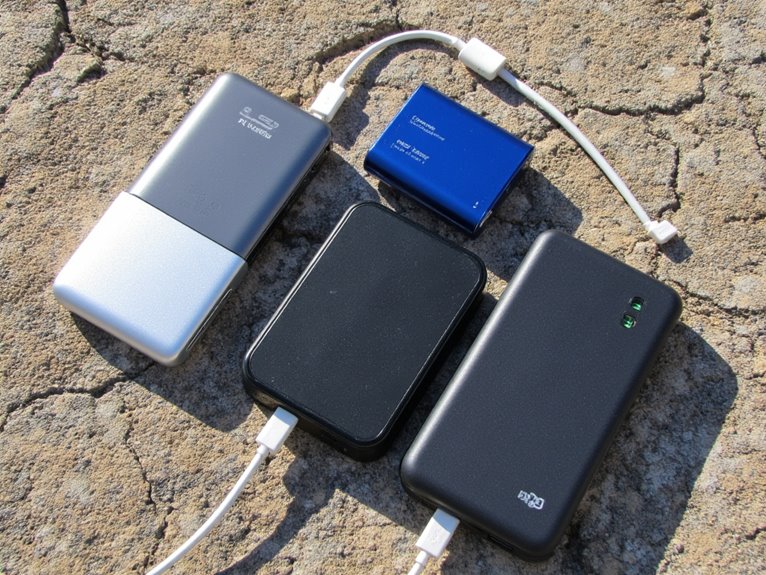Do You Need to Break in Mountaineering Boots?
Mountaineering boots, with their stiff materials and unique features, require a deliberate break-in process to facilitate a comfortable and supportive fit, allowing climbers to perform at their best in demanding outdoor environments. Breaking in boots involves gradually introducing the feet to the stiff materials and molding the boot to the unique foot shape. This process, which can take several days to a few weeks, is essential for achieving peak comfort and performance. By understanding the importance of breaking in boots early, climbers can prevent discomfort, injury, and performance issues, and tap the full potential of their mountaineering boots – and their climbing abilities.
We are supported by our audience. When you purchase through links on our site, we may earn an affiliate commission, at no extra cost for you. Learn more. Last update on 25th November 2025 / Images from Amazon Product Advertising API.
Understanding Mountaineering Boot Design
Mountaineering boots are engineered with a unique blend of features that provide both support and flexibility, with a design that prioritizes ankle mobility, waterproofing, and insulation.
This deliberate design guarantees that climbers can navigate challenging terrain with confidence, while maintaining a comfortable and stable footing.
The boot's upper material is typically made of durable, water-resistant materials, such as leather or synthetic fabrics, to protect the foot from harsh weather conditions.
The midsole and outsole are designed to provide cushioning and traction, respectively, allowing for a smooth and secure stride.
Types of Mountaineering Boots Matter
Depending on the specific demands of a climb, different types of mountaineering boots are designed to excel in various conditions, from glacier travel to high-altitude ascents.
For instance, insulated, single-layer boots are ideal for cold, wet conditions, while double-layer boots provide added warmth and dryness for extreme cold.
Lighter, more agile boots are suited for faster, more technical climbs, whereas heavier, more supportive boots are better for heavy loads and rugged terrain.
Understanding the specific demands of your climb and choosing the right boot type is vital for peak performance and safety.
Breaking in Boots for Comfort
While a well-fitting boot is essential, even the most meticulously selected pair can be uncomfortable until broken in properly, which is why a deliberate break-in process is essential for achieving peak comfort and performance.
Breaking in boots for comfort involves gradually introducing your feet to the stiff materials and molding the boot to your unique foot shape.
This can be achieved by wearing the boots around the house, on short walks, and during light activities.
Start with short sessions and gradually increase the duration to allow your feet to adapt.
Be patient, as this process can take several days to a few weeks.
When to Break in Boots Early
When to Break in Boots Early
Ideally, boots should be broken in at least two to three weeks prior to undertaking a major expedition or tackling a challenging climb, allowing sufficient time for the materials to mold to your feet and preventing unnecessary discomfort or blistering.
This allows for a gradual adjustment period, enabling your feet to adapt to the new boots and reducing the risk of discomfort or injury.
Breaking in boots early also enables you to identify and address any potential issues, such as pressure points or hotspots, before they become major problems on the mountain.
Boots for Beginners and Experts
In the realm of selecting mountaineering boots, beginners and experts alike must prioritize proper fit and sizing.
A well-fitting boot is essential for both comfort and performance, and requires careful consideration of factors such as foot shape, ankle mobility, and intended use.
Choosing the Right Fit
Selecting a pair of mountaineering boots that fit comfortably is essential, as even the most experienced climbers can be hindered by poorly fitting footwear.
A proper fit guarantees a more efficient and safe climbing experience.
For beginners, a comfortable fit allows for a more enjoyable learning experience, while for experts, a precise fit facilitates peak performance.
When trying on boots, wear the same type of socks you plan to climb in and walk around the store to confirm a comfortable fit.
Look for a snug heel fit, a roomy toe box, and a comfortable ankle and calf fit.
Avoid boots that are too tight or too loose, as they can cause discomfort, blisters, and decreased performance.
Breaking In Required
Most mountaineering boots, regardless of the user's experience level, require a breaking-in period to mold to the wearer's feet and guarantee a perfect fit for peak performance.
This process allows the boot's materials to conform to the unique shape of the wearer's foot, reducing discomfort and blisters.
Both beginners and experts alike need to break in their boots to facilitate a comfortable and efficient climbing experience.
A well-broken-in boot provides better ankle support, improved traction, and superior overall performance.
Proper Sizing Matters
Accurate sizing is vital for both novice and experienced mountaineers, as it directly impacts the overall performance and comfort of the boot.
Ill-fitting boots can lead to discomfort, blisters, and even injuries.
To achieve a proper fit, consider the following:
Measure your feet: Take precise measurements of both feet, as one foot may be larger than the other.
Try before you buy: If possible, try on boots before purchasing to guarantee a comfortable fit.
Consider the last: Different manufacturers use different lasts, which can affect the fit. Research the last used in your chosen boot.
Don't forget the socks: Wear the same type of socks you plan to wear while mountaineering to guarantee a comfortable fit.
Proper sizing is essential for a successful and enjoyable mountaineering experience.
Breaking in Boots for Fit
When breaking in mountaineering boots for a comfortable fit, employing targeted techniques to stretch the boot material and mold it to your foot shape is crucial.
This process involves identifying tight spots, utilizing wear and walk-around strategies, and applying boot stretching methods to alleviate pressure points.
Boot Stretching Techniques
To achieve a comfortable fit, boot stretching techniques are essential for breaking in mountaineering boots, as they enable the boot to conform to the unique shape of your foot. These techniques help to relax the stiff materials and allow the boot to mold to your foot's shape.
- Freezer Trick: Place a plastic bag filled with water in the boot and freeze it. As the water expands, it will stretch the boot material.
- Heat and Conditioning: Apply heat to the boot using a hair dryer or heat gun, then apply a conditioning treatment to soften the materials.
- Stretching with Tools: Use specialized tools, such as boot stretchers or shoe stretchers, to gently stretch the boot material.
- Wearing Thick Socks: Wear thick socks while breaking in the boots to help stretch the material and mold it to your foot shape.
Wear and Walk Around
Now that your boots have been stretched, slip them on and walk around to help your feet mold the boot's interior to their unique shape.
This step is essential in breaking in your mountaineering boots, as it allows the materials to conform to your foot's contours.
Walk around your house, up and down stairs, and on various surfaces to simulate the movements you'll make on the mountain.
Pay attention to how your feet feel in the boots, taking note of any pressure points or areas of discomfort.
As you walk, the boots will begin to adapt to your feet, providing a more comfortable and customized fit.
Tight Spots Identification
Identifying tight spots early on is vital, as it allows you to address potential hotspots and pressure points before they become painful blisters on the mountain.
As you begin breaking in your mountaineering boots, pay close attention to areas that feel constricted or uncomfortable.
To identify tight spots, follow these steps:
- Ankle and heel fit: Check for snugness around the ankle and heel, ensuring a comfortable, secure fit.
- Toe box and width: Verify that your toes have sufficient room to wiggle and that the boot's width aligns with your foot's natural shape.
- Lacing and tongue: Ensure the lacing system and tongue don't cause pressure points or hotspots.
- Calf and shaft fit: Check that the calf and shaft fit comfortably, without constricting or rubbing.
Breaking in Boots for Performance
Properly broken-in mountaineering boots can substantially improve overall performance by providing a comfortable, responsive, and supportive fit that allows climbers to focus on the terrain ahead.
A well-broken-in boot enables a snug, customized fit that responds to every step and movement, enhancing agility and balance.
This, in turn, boosts confidence and efficiency, allowing climbers to tackle challenging routes with greater ease.
Additionally, a broken-in boot reduces fatigue and discomfort, enabling climbers to push themselves further and longer.
Furthermore, by investing time in breaking in their boots, climbers can reap significant performance benefits, ultimately leading to a more successful and enjoyable climbing experience.






